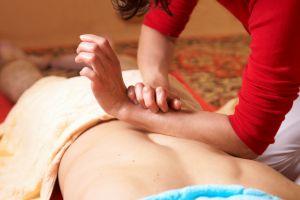Hypertension, more commonly known as high blood pressure, affects one in three adults in America, the majority of who are aged 65 years or over. Hypertension is defined by the consistent measurement of a systolic blood pressure exceeding 140 mmHg and/or a diastolic blood pressure exceeding 90 mmHg. The systolic blood pressure refers to the pressure in the arteries during a heart beat and the diastolic blood pressure is the pressure in the arteries in between heart beats.
It is normal for individuals to experience high blood pressure during exertion. However, if a person’s blood pressure is consistently high, they are at an increased risk of stroke and heart disease, two leading causes of mortality in America. Hypertension often goes unnoticed, as no apparent outward symptoms are associated with the disease. The condition is commonly diagnosed in the physician’s office when a physician measures a patient’s blood pressure with a sphygmomanometer during a routine medical examination.
Lifestyle Changes and Massage Therapy as Treatment
Many lifestyle factors contribute to hypertension, including cigarette smoking, excessive alcohol consumption, lack of regular exercise, an unhealthy diet and being overweight. Antihypertensive drugs are the primary treatment for hypertension and oftentimes, multiple drugs are used to achieve a final satisfactory blood pressure reading.
Are you interested in becoming a certified massage therapist?
Visit the links below to explore our massage therapy programs at a campus near you:
Quitting cigarette smoking, reducing alcohol intake, regular exercise, changing unhealthy dietary habits, and reducing body weight may help hypertension that is caused by lifestyle factors. Adults with hypertension should aim to reduce their experience of stress in order to prevent rises in blood pressure. For this reason, massage can be beneficial for hypertension.
Clinical Studies Supporting Massage Therapy for Hypertension
A study in the effects of myofascial trigger-point massage therapy for people with hypertension showed that significant decreases in both diastolic and systolic blood pressure resulted following massage. The study, conducted by Delaney, J.P., Leong, K.S., Watkins, A., and Brodie, D. in 2002 at the Wirral Metropolitan College Department of Medicine in Liverpool, United Kingdom, also reported that patients experienced decreases in muscular tension and heart rate as a result of massage therapy.
A study conducted by Hernandez-Reif, M., Field, T., Krasnegor, J., Theakston, H., Hossain, Z., and Burman, I. reported by the Journal of Bodywork and Movement Therapies in the year 2000, also asserts that hypertension and its associated symptoms were reduced through massage therapy. The subjects in this study were provided with 10 30-minute massage sessions over the course of five weeks. The subjects, all of who suffered from hypertension, experienced reduced blood pressure, reduced feelings of depression, less hostile behavior, and reduced levels of cortisol in their urine and salivary samples. Hernandez-Reif concluded that massage for hypertension may be beneficial to reduce diastolic blood pressure and lessen the symptoms associated with hypertension.
Research by Mieko Kurosawa, Thomas Lundeberg, Greta Ögren, Irene Lund and Kerstin Uvnäs-Moberg, conducted in 1995 at the Department of Physiology and Pharmacology at the Karolinska Institute in Stockholm, Sweden, reported that massage-like stroking of the lateral and ventral sides of the abdomen lowered arterial blood pressure in anesthetized rats. Research by Boone, T., Tanner, M., and Radosevich, A., conducted in 2001 and reported in the American Journal of Chinese Medicine, showed that subjects with hypertension who received a ten-minute long back rub experienced decreased cardiac output. The study, which took place in the Department of Exercise Physiology at The College of St. Scholastica in Duluth, USA, supports the findings of the aforementioned studies.
Massage is a safe, non invasive, and soothing treatment for hypertension, particularly for people that experience stress on a frequent basis. If treated regularly, massage patients demonstrate long term improvement in stress levels and heart rate.
Featured Posts:

